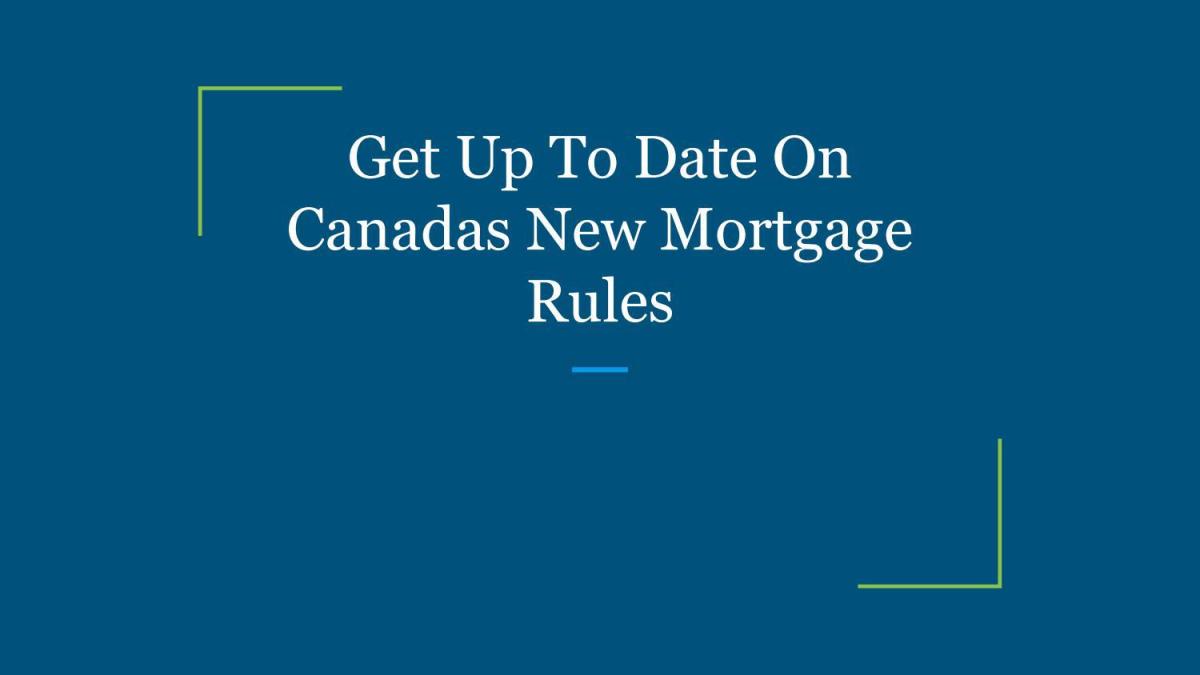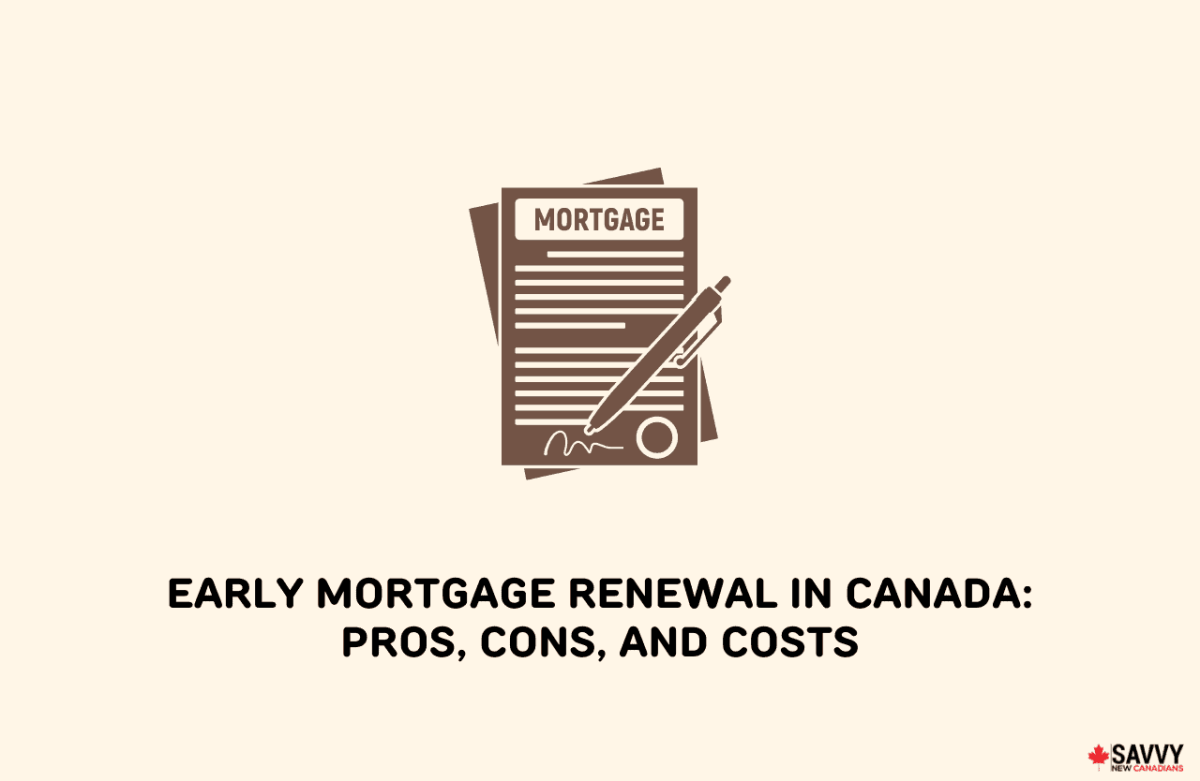2026 Mortgage Renewal Canada: Navigating the renewal process in 2026 will be crucial for Canadian homeowners. Interest rates are expected to fluctuate, impacting monthly payments and overall mortgage costs. Understanding your options – fixed vs. variable, open vs. closed mortgages – is key to making informed decisions and securing the best possible terms.
This guide will walk you through the process, helping you prepare for a smooth and financially savvy renewal.
We’ll explore potential interest rate changes, analyze different renewal strategies, and offer practical advice to help you negotiate favorable terms with your lender. We’ll also look at how economic factors like inflation and housing market conditions will influence your choices. By the end, you’ll be equipped to confidently tackle your 2026 mortgage renewal.
Canadian Mortgage Rates in 2026
Predicting mortgage rates is inherently complex, influenced by a multitude of interconnected economic factors. While no one can definitively state what rates will be in 2026, we can analyze current trends and potential scenarios to offer informed projections. This section will explore potential interest rate changes in Canada for 2026, considering economic factors, comparing projected rates for different terms, and detailing the influencing factors, including Bank of Canada policy and global economic trends.
A table comparing potential mortgage rates across various lenders will also be provided.
Potential Interest Rate Changes in 2026
Several factors will influence Canadian mortgage rates in 2026. The Bank of Canada’s monetary policy will play a crucial role. If inflation remains stubbornly high, the Bank may continue to raise interest rates, leading to higher mortgage rates. Conversely, if inflation cools significantly, rates might stabilize or even decrease. Global economic conditions, such as fluctuations in oil prices and international interest rates, will also exert pressure on Canadian rates.
Projected Mortgage Rates for Different Terms
Generally, longer-term mortgages (e.g., 10-year) tend to offer slightly higher interest rates than shorter-term mortgages (e.g., 5-year) to compensate lenders for the increased risk associated with longer commitments. However, the spread between these terms could vary depending on market conditions. For instance, if the market anticipates significant rate hikes, the difference between a 5-year and a 10-year fixed rate might be more pronounced.
Planning for your 2026 mortgage renewal in Canada? Interest rates are a big unknown, so it’s smart to start thinking ahead. For a bit of a brain teaser while you strategize, check out the clues for the NYT Connections puzzle on nyt connections hints january 7. Afterward, you can get back to figuring out the best way to tackle that 2026 mortgage renewal.
It’s all about being prepared!
Factors Influencing Rate Predictions
The Bank of Canada’s key interest rate is the primary driver of mortgage rates. Other factors include inflation rates, unemployment levels, economic growth, and global economic events. A strong Canadian dollar could potentially put downward pressure on rates, while a weakening dollar might have the opposite effect. The health of the Canadian housing market itself also influences rates; a cooling market might lead to slightly lower rates, while a hot market could drive them up.
Potential Mortgage Rates Across Various Lenders in 2026

The following table provides estimated mortgage rates for different terms from various hypothetical lenders. These are illustrative examples and should not be considered financial advice. Actual rates will vary depending on individual credit scores, down payments, and other factors.
| Rate (%) | Term (Years) | Lender | Estimated Monthly Payment (on $500,000 mortgage) |
|---|---|---|---|
| 5.5 | 5 | Hypothetical Lender A | $2,800 |
| 6.0 | 5 | Hypothetical Lender B | $2,900 |
| 6.2 | 10 | Hypothetical Lender A | $2,950 |
| 6.5 | 10 | Hypothetical Lender B | $3,050 |
Renewal Options for Mortgages in 2026
When your mortgage comes up for renewal in 2026, you’ll have several options. Understanding these options and their implications is crucial for making an informed decision. This section will explain the various mortgage renewal options available to Canadian homeowners in 2026, comparing and contrasting their benefits and drawbacks. A step-by-step guide and a flowchart will aid in navigating the renewal process.
Mortgage Renewal Options
- Fixed-Rate Mortgage: Offers predictable monthly payments, shielding you from interest rate fluctuations. However, you may miss out on potential rate decreases.
- Variable-Rate Mortgage: Your interest rate fluctuates with the Bank of Canada’s prime rate. This could lead to lower payments initially, but also increased payments if rates rise. This option offers the potential for lower overall interest costs if rates remain low or fall.
- Open Mortgage: Allows you to pay off the mortgage early without penalty. This flexibility comes at a cost – typically a higher interest rate.
- Closed Mortgage: Offers lower interest rates but typically involves penalties for prepayment.
Step-by-Step Guide to Mortgage Renewal

- Review your current mortgage terms: Understand your current interest rate, amortization period, and any penalties for breaking the mortgage.
- Shop around for the best rates: Compare offers from multiple lenders, considering both fixed and variable rates.
- Assess your financial situation: Consider your income, expenses, and risk tolerance.
- Negotiate with your current lender: They may offer competitive rates to retain your business.
- Finalize your choice and sign the new mortgage agreement: Ensure you fully understand the terms and conditions before signing.
Decision-Making Flowchart for Mortgage Renewal

A flowchart would visually represent the decision-making process. It would start with assessing the current mortgage terms, then branch out to options based on the homeowner’s financial situation and risk tolerance. Each branch would lead to a decision point, eventually culminating in the selection of a renewal option (fixed, variable, open, or closed).
Impact of Economic Factors on 2026 Renewals
The economic climate significantly influences mortgage renewal rates and options. Understanding potential economic headwinds and tailwinds is crucial for preparing for your renewal. This section will discuss the potential impact of inflation, changes in housing market conditions, and identify potential risks associated with renewing a mortgage in a volatile economic climate.
Economic Headwinds and Tailwinds Affecting 2026 Renewals
- Inflation: High inflation typically leads to higher interest rates, increasing your monthly payments.
- Housing Market Conditions: A cooling housing market might decrease competition and potentially lead to slightly better rates, while a hot market could drive rates higher.
- Interest Rate Volatility: Unpredictable interest rate fluctuations increase the risk of unexpected payment increases with variable-rate mortgages.
- Global Economic Uncertainty: Geopolitical events and global economic slowdowns can impact Canadian interest rates.
- Potential for Recession: A recessionary environment can negatively impact employment and income, making mortgage payments more challenging.
Strategies for Managing Mortgage Renewals
Proactive planning and preparation can significantly improve your chances of securing favorable mortgage renewal terms. This section will share strategies for homeowners to prepare for their 2026 mortgage renewal, including advice on improving credit scores and negotiating favorable terms with lenders.
Preparing for Mortgage Renewal
Start planning well in advance of your renewal date. Monitor interest rates, assess your financial situation, and compare offers from multiple lenders. Improving your credit score before renewal can significantly improve your chances of securing better rates.
Improving Credit Scores
A higher credit score typically translates to lower interest rates. Pay your bills on time, reduce your debt-to-income ratio, and avoid applying for new credit frequently.
Negotiating Favorable Terms
Don’t hesitate to negotiate with your current lender and other lenders. Highlight your history of on-time payments and your strong creditworthiness. Be prepared to walk away if you don’t get a satisfactory offer.
Pre-Renewal Checklist, 2026 mortgage renewal canada
- Review your current mortgage terms 6 months before renewal.
- Check your credit report and address any errors.
- Start shopping for new mortgage rates 3 months before renewal.
- Negotiate with your current lender and other lenders.
- Finalize your choice and sign the new mortgage agreement at least 1 month before the renewal date.
Illustrative Examples of Renewal Scenarios: 2026 Mortgage Renewal Canada

Let’s consider a few hypothetical scenarios to illustrate the financial implications of different renewal choices. These examples highlight the impact of increasing and decreasing rates, different amortization periods, and the overall cost of the mortgage.
Scenario 1: Increasing Rates
Sarah has a $400,000 mortgage with a 25-year amortization. Her renewal rate increases from 2.5% to 5%. This will significantly increase her monthly payments, impacting her budget. She might consider shortening her amortization period to reduce the total interest paid, although this will further increase her monthly payments.
Scenario 2: Decreasing Rates
John has a $500,000 mortgage with a 20-year amortization. His renewal rate decreases from 4% to 3%. This allows him to either lower his monthly payments, shorten his amortization period, or potentially even pay off his mortgage faster.
Scenario 3: Maintaining the Same Rate
Maria has a $350,000 mortgage with a 15-year amortization. Her renewal rate remains the same at 3.75%. She might consider maintaining her current payment schedule or explore the option of making extra payments to reduce the principal and shorten her amortization period, saving on interest costs in the long run.
Final Summary
Renewing your mortgage in 2026 requires careful planning and proactive steps. By understanding potential interest rate shifts, exploring different renewal options, and developing effective negotiation strategies, you can significantly impact your monthly payments and long-term financial health. Remember to start planning early, improve your credit score if needed, and don’t hesitate to seek professional advice to ensure you make the best decision for your individual circumstances.
A well-prepared renewal can lead to significant savings and peace of mind.
Top FAQs
What if I can’t afford the higher payments after renewal?
Facing a 2026 mortgage renewal in Canada? You’ll want to be prepared, and that means understanding your options. One thing to consider is how interest rates might affect your budget; perhaps you could explore alternative investments, like checking out this interesting project, cl-415 , to diversify. Ultimately, though, your focus should remain on securing the best possible mortgage renewal terms for 2026.
Contact your lender immediately. They may offer options like extending the amortization period or switching to a different mortgage type to lower your monthly payments.
Facing a 2026 mortgage renewal in Canada? Rates are a big question mark, so planning ahead is key. It might seem unrelated, but thinking about budgeting is similar to planning a big trip, like maybe chartering a jetblue plane – you need to map out your expenses carefully. Similarly, review your finances and explore your renewal options well in advance of your 2026 mortgage renewal date.
How far in advance should I start planning my renewal?
Ideally, start planning 3-6 months before your renewal date to allow ample time for research and negotiations.
Can I refinance my mortgage instead of renewing?
Yes, refinancing involves getting a new mortgage with potentially better terms. It’s a good option if you want to change lenders or adjust your amortization period.
What documents do I need for mortgage renewal?
Typically, you’ll need proof of income, credit report, and possibly property appraisal. Your lender will provide a specific list of required documents.
